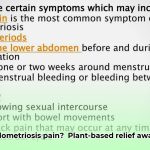Ready to grow amazing almonds? This guide is your secret weapon for boosting your harvest and building a thriving almond farm. We’ll walk you through everything, from picking the right almond trees to dealing with pests and maximizing your water use. We’ll even show you exactly why considering the rootstock of Almond Tel trees is a top choice and how it compares to other varieties. For other nut milk options, check out this article on Almond vs. Coconut Milk. Forget the guesswork – let’s get you on the path to a profitable and sustainable almond operation!
Almond Tel: Your Guide to a Bumper Almond Crop for High-Quality Almonds
Let’s crack the code to bigger, better almond harvests! This guide is your roadmap to success, whether you’re a seasoned pro or just starting out. Get ready to grow amazing almonds and improve your almond cultivation techniques!
Choosing Your Location: Setting the Stage for Success with Optimal Sunlight Exposure
Picking the perfect spot for your almond orchard is crucial for setting the stage for success. Almonds thrive in Mediterranean-style weather: scorching summers and enough cold winter days (below 45°F) to meet their chill hour requirements, typically between 300 and 800 hours depending on the variety. Ensure proper frost protection, especially during the early bloom stages. Your soil should be well-drained, ideally a sandy loam with a pH between 6.0 and 7.0. Poor drainage leads to root rot caused by fungal diseases, so assess drainage thoroughly before planting. A soil test is essential, revealing your soil’s pH and nutrient levels, enabling adjustments before planting. Amend the soil with organic matter to improve drainage and fertility. Proper land preparation gives your almonds the best start.
Picking the Perfect Almond Variety: A Decision That Impacts Your Profits and Market Demand
Variety selection greatly affects your yields and profits. Do you need a self-fertile variety like ‘All-in-One’ or ‘Garden Prince’? Or will you need companion varieties like ‘Nonpareil’ and ‘Carmel’ for cross-pollination and increased insect activity? Consider your local climate, chill hour requirements, pest resistance, bloom time, and market demand – these factors significantly influence your choice. For instance, ‘Nonpareil’ almonds are a popular commercial variety, while ‘All-in-One’ is ideal for smaller spaces due to its self-pollinating nature and smaller size. Almond Tel offers a fantastic range of varieties. Check out their catalog to find the best fit for your farm and your goals! Selecting the correct cultivar is a key aspect of orchard management.
Planting and Early Care: Nurturing Your Young Trees to Maturity and Tree Growth
Getting your almond trees off to a strong start is essential. Plant bare-root seedlings in late winter or early spring during dormancy. Planting depth and spacing are crucial – space trees 15 to 20 feet apart to allow for adequate sunlight and airflow. Dig a hole wide and deep enough to accommodate the taproot without bending or trimming it. Provide regular watering, especially during dry spells, aiming for 1-2 inches of water per week. Use mulch around the base to retain moisture and suppress weeds. Regular pruning keeps trees healthy and productive, removing dead or crossing branches to improve light penetration and air circulation. Staking young trees in windy locations is recommended for the first year.
Irrigation and Water Management: Finding the Sweet Spot with Water Conservation Strategies
Water is essential but too much can be detrimental. Almond Tel can offer tailored advice on irrigation techniques suited to your location and soil. Drip irrigation is efficient, minimizing waste by delivering water directly to the root zone. Consider soil moisture sensors for precise monitoring, which help avoid overwatering and underwatering. Optimize water distribution with modern techniques such as micro-sprinklers or subsurface drip irrigation (SDI). Monitor evapotranspiration rates to adjust irrigation schedules based on weather conditions.
Pest and Disease Management: Protecting Your Investment with Biological Control Methods
Pests like the navel orangeworm, peach twig borer, and spider mites, and diseases like hull rot, anthracnose and shot hole fungus can seriously harm your almond harvest. Regular monitoring is crucial. Almond Tel provides expert guidance on integrated pest management (IPM), exploring ways to control pests without harmful chemicals. Encourage beneficial insects to control pest populations naturally. Use pesticides only when absolutely necessary and always follow instructions. Remove and destroy any mummy nuts (almonds that remain on the tree after harvest) to prevent navel orangeworm infestations. Apply dormant oil sprays during the winter to control overwintering pests. Using IPM strengthens your almond trees pest management.
Harvesting and Post-Harvest Handling: From Orchard to Market with Quality Control
Timing is crucial when harvesting to ensure perfect maturity. Harvest when the hulls begin to split open, revealing the almond shell. Large-scale operations often use mechanical harvesting, but you can shake the trees manually for smaller operations. After harvesting, proper handling prevents spoilage. Remove the hulls, and dry the almonds in a thin layer on a clean surface for about a week, stirring periodically to ensure even drying. Shelling is essential before sale or processing. Almond Tel can connect you to processors and buyers. Proper handling is key for preserving almond quality.
Processing and Applications: Expanding Your Almond Horizons and Value-Added Products
Beyond the snack market, almonds are versatile! They can be used to make almond milk, flour, and oil, and they are a key ingredient in countless other products. Understanding the market will help you decide how to best process and sell your almonds. Almond Tel can assist you in discovering the perfect market niche for your almonds. Consider value-added products like roasted almonds, flavored almonds, or almond butter to increase profitability. Expanding your processing capabilities broadens your market reach.
Comparing Almond Varieties: A Quick Glance and Variety Selection
Here’s a handy table comparing popular almond varieties, highlighting their key characteristics. This helps you choose the best option for your farm.
| Variety | Self-Fertile? | Chill Hours (approx.) | Pest Resistance (general) | Maturity Time | Hardiness Zone |
|---|---|---|---|---|---|
| Nonpareil | No | 400-600 | Moderate | Early | 7-9 |
| Carmel | No | 500-700 | Moderate | Mid-season | 7-9 |
| All-in-One | Yes | 300-400 | Good | Mid-season | 5-9 |
| Fritz | No | 600-800 | High | Late | 7-9 |
Remember, cultivating profitable almond orchards takes careful planning, consistent monitoring, and adapting to your specific conditions. Partner with experts like Almond Tel and leverage the available resources.
How to Efficiently Irrigate Almond Trees for Optimal Yield Through Water Use Efficiency
Water management is critical in almond cultivation. Efficient irrigation not only conserves water but also optimizes yields and promotes sustainability. Let’s explore how to efficiently irrigate for optimal yield.
Key Takeaways:
- Timing is everything: Water needs change throughout the almond tree’s life cycle. Precise scheduling is key.
- Smart irrigation saves water and money: Drip irrigation and micro-sprinklers are more efficient than traditional methods, minimizing water loss.
- Healthy soil is thirsty soil: Good soil structure improves water absorption and reduces waste, leading to better water infiltration.
- Technology helps: Sensors and automated systems optimize water delivery.
- Consider your climate: Drought-resistant varieties and careful planning are vital in dry conditions.
Understanding Almond Water Needs and Evapotranspiration
Almond trees have varying water needs depending on their growth stage. Consistent moisture during bud break and flowering is crucial for blossom set and fruit development. Insufficient water here drastically reduces yield, whereas excessive watering leads to splitting and disease. Apply approximately 3-4 inches of water per week during the growing season, adjusting based on rainfall and temperature. Knowing when and how much to water is critical, and this precision is vital for a efficient irrigation.
Choosing the Right Irrigation System Based on Soil Types
Traditional flood or sprinkler irrigation methods waste water due to evaporation. Consider the following:
- Drip Irrigation: This delivers water directly to the root zone, minimizing evaporation and runoff, thus improving the water efficiency.
- Micro-sprinklers: These offer a balance between efficiency and even coverage, particularly beneficial for larger trees with good spatial distribution.
- Subsurface Drip Irrigation (SDI): Burying the drip lines reduces evaporation even further and can suppress weeds. Proper installation and monitoring help for a better root irrigation.
Pros and Cons of Irrigation Systems: Cost-Benefit Analysis
| System | Pros | Cons |
|---|---|---|
| Drip Irrigation | High water efficiency, targeted water delivery, reduces weed growth | Can be more expensive upfront, requires careful installation and maintenance |
| Micro-sprinklers | Good coverage, relatively easy to install and maintain | Less efficient than drip irrigation, susceptible to clogging |
| Subsurface Drip Irrigation | Highest water efficiency, reduced evaporation, weed suppression | Higher installation cost, potential for root intrusion, more complex maintenance |
Optimizing Your Irrigation Schedule for Water Conservation
Soil moisture sensors provide crucial data, telling you exactly when trees need water, avoiding both under and overwatering. Coupled with weather data and knowledge of your tree’s growth stage, this allows you to create a precise irrigation schedule. Monitor soil moisture levels at different depths to understand water penetration
- Plant-based Diet Colitis Remission: Success Stories - December 18, 2025
- Plant Based Diet Breast Cancer: Research-Based Benefits - December 16, 2025
- Plant-Based Diet Ulcerative Colitis Remission: Proven Benefits - December 15, 2025










